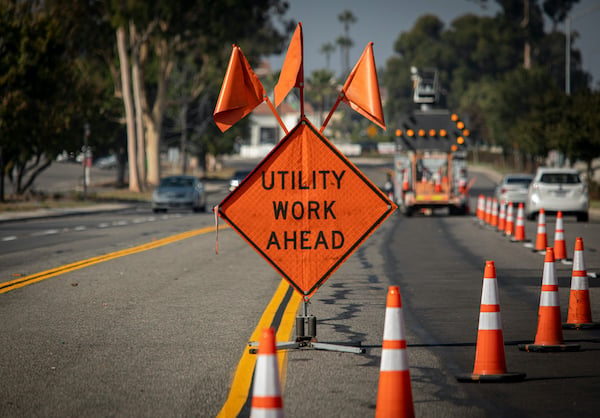Understanding Build to Suit Development
A subset of real estate development, a build to suit may be an operating company’s solution to both facility optimization and workplace strategy challenges.
Record low vacancy rates in metros across the Southeast United States have commercial tenants scrambling to find space. And as migration patterns change and companies look to expand, many end up settling on something out of necessity - hoping that by kicking the can down the road another 3-5 years, the rental market will look different.
High-margin operating companies are even using a build to suit development to allocate capital investment dollars more efficiently into core operations.
But before we dive into a discussion about the merits of a build to suit and what types of businesses it makes sense for, let’s define the term.
What is a Build to Suit?
A build to suit (BTS) is a type of commercial real estate transaction where a commercial building is custom designed and built for a specific end-user. The operating company (tenant) will either lease the space back from the developer or investor.
There are two types of build to suit arrangements:
- Sale-Leaseback: In a sale-leaseback BTS, the operating company will assume the responsibility for development. They will select a site, properly entitle the land, secure financing, and hire a contractor to design and build the space. Following the construction completion, the operating company will sell the building and subsequently lease back the space. The tenant will get all their acquisition capital back and is often compensated for their development risk when the sale price is greater than development costs.
- Developer Led: In other cases, an operating company will hire a development company to manage the process. An operator will enter into an agreement with a developer who will acquire the land, finance the project, and manage its construction and risk. The operator will then lease the space from the developer.
Advantages of a Build to Suit
Regardless of the method through which a BTS development is achieved, there are several advantages to consider:
- A build to suit allows an operator to achieve "facility optimization" - maximizing organizational efficiency through custom-built real estate.
- The lease term is longer than typical leases. This offers financial incentive to the developer while affording an operating company a more predictable lease rate over a more extended time.
- Rent is tax-deductible, which may offer a more effective tax shield than interest payments and depreciation expense.
Each build-to-suit arrangement offers several unique advantages that should be considered as well.
Using a Developer:
- By enlisting a developer for the project, an operating company is shielded from several downside risks of funding its development.
- A BTS is less risky for a developer than speculative development – the tenant is already identified and locked into a lease.
- An occupier doesn't have to tie up any resources in the development process; depending on the circumstances, capital can be more effectively deployed to support core business operations.
Sale & Leaseback Approach:
- A sale-leaseback inherently offers several unique advantages for operating companies. Check out our deep dive on sale-leasebacks for a more in-depth discussion.
- The operator is usually compensated for the risk of development (assuming that an investor will acquire at a price above development costs) – this creates instant equity for the tenant.
Disadvantages of a Build to Suit
Depending on an operating company's line of business, a build to suit may not be the most cost or time-effective. There are several disadvantages to consider:
- If a company’s growth projections are unknown, a long-term lease may lock them into real estate that they’ll quickly grow out of.
- Construction can be expensive. Those construction costs may be reflected in a higher lease rate.
- Depending on the municipality and construction type, a build to suit can take up to 24+ months.
- A tenant must be creditworthy enough to either secure self-financing or attract a developer to accept the project.
How Do the Design and Build Processes Work for a Build to Suit Development?
Because a build to suit is specifically built for a single end-user, the tenant has almost unilateral creative control over much of the design process. They’ll work in concert with the general contractor, engineers, architects, and real estate developer through the design and build processes.
The development team will serve as the tenant’s project advisor and help shepherd them through the process.
However, if a real estate developer manages the project, they may have some power over the building design. Suppose a design strays too far from the market and industry norms. In that case, a property may be more challenging to relet and sell in the future – burdening a developer with real estate at risk of functional obsolescence. And an investor would share the same concerns.
Is a Build to Suit Right for My Company?
At the same time that demand for specific product types has increased in many markets, construction costs have skyrocketed due to supply chain disruptions and material shortages.
And these costs are being passed to the end-user – tenants feel the pain through increased rental rates and fewer quality rental options when many markets are already experiencing upward pressures.
This confluence of factors poses an issue for efficient market functioning. Development yields continue to fall, and tenants become more desperate.
So, what’s the solution? As a developer, you’re hoping that you’re not the one building $20/ft space in a $12/ft neighborhood? And as a tenant, you’re just trying to find enough quality space at an affordable price so you can continue to scale operations. But someone is always left catching the falling knife.
A build to suit is an option to help real estate developers combat the risk of speculative development and compressed yields. And as an operating company, a build to suit may be a long-term solution to workplace strategy challenges, company growth, and an unpredictable rental market.
What’s the Next Step?
Before you start down the path of a build-to-suit development, several questions need to be answered.
First, you need to decide if leasing real estate is best for your business. The decision needs to be deliberate – because it carries balance sheet, tax, and business value considerations. For more context, I’ve framed the question of leasing vs. buying real estate here.
Maybe after all that, you think buying is the better option. Check out 10 tips for buying commercial real estate as a small business.
There may be no right answer. Still, it's crucial to find a developer and real estate strategy consultant who can help coach you through the decision-making process.
Marsh & Partners' proprietary real estate strategy assessment will offer insights into your business and help better align your real estate and business strategy.



